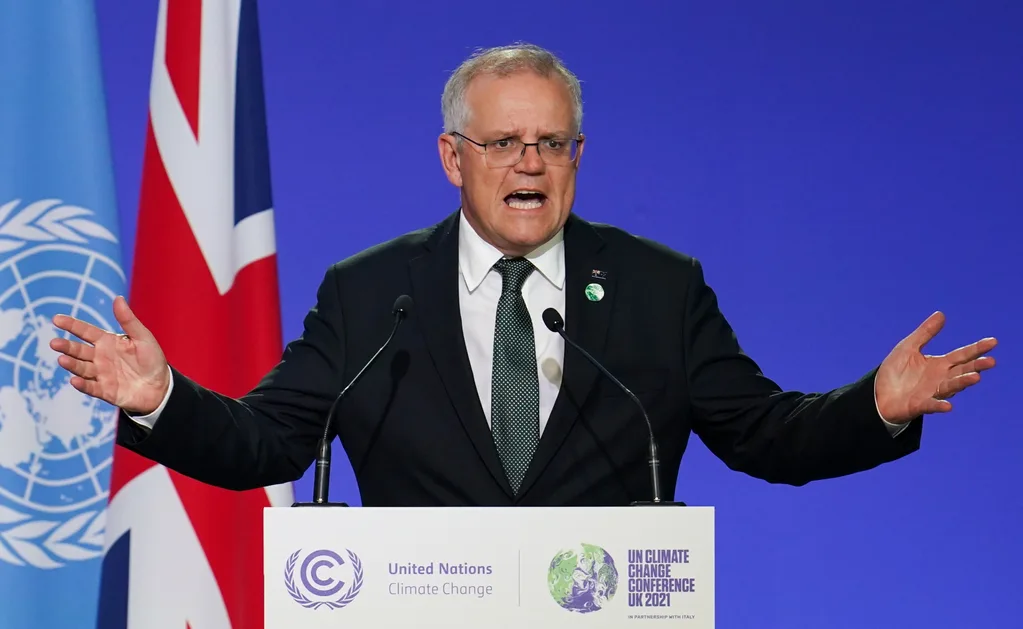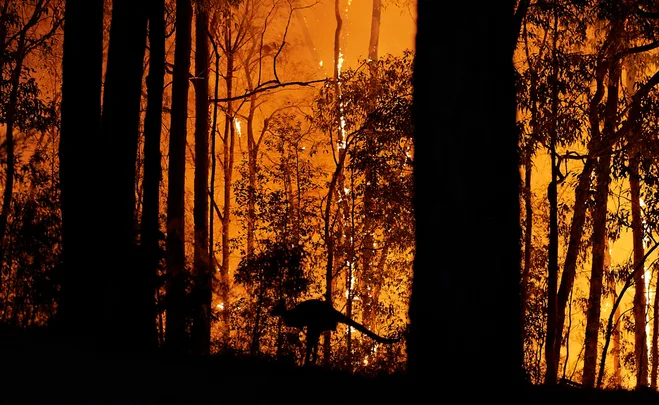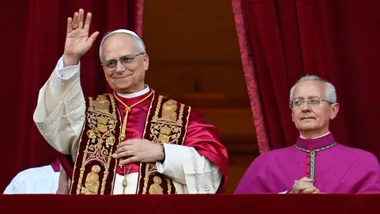Across the other side of the world in a small corner of Glasgow, Scotland, 120 world leaders made an agreement that would ultimately impact the world as we know it for our foreseeable future.
Indeed, the COP26 conference brought these leaders together in a world where the term “climate anxiety” exists, and is only becoming more normalised—for a worryingly justified reason.
The milestone event was touted as the most important in the conference’s history—it marked five years since the Paris Agreement set out key objectives in preventing (or at least slowing down) the devastating effects of climate change.
This year’s summit marked a crucial moment in the natural earth’s history, with the potential to make or break the direction of climate change.
So did our world leaders come to an agreement that would ultimately save the world? Kind of, but not exactly.
Here, everything you need to know about what was agreed at COP26 and where Australia stands in all of this.

What was agreed at COP26?
The agreement made in Glasgow is extensive, but there are several key elements to the objectives set out and promised by leaders present that are significant. Here, we unpack each of them to determine how and if they will be viable.
1. Keep the global temperature rise to 1.5 degrees celsius
In 2015 at the Paris summit, world leaders agreed to keep rising temperature levels “well below 2 degrees Celsius”. That .5 degree difference is crucial; per the World Resources Institute, severe warm weather events would be 2.6 times more likely to occur at a global warming rate of 2 degrees-plus. To add, sea levels would rise .06 metres more each year, plant-loss would be 2 times worse, and the decline in coral reefs would exellarate up to 29 per cent more.
With these devastating consequences in mind, the Glasgow summit agreed to prevent temperatures rising by more than 1.5 degrees.
But (and this is a big but) the other objectives stipulated in conference’s final agreement don’t necessarily stack up to make this target feasible.
Per the non-profit organisation Climate Action Tracker, if every single one of the commitments made in this agreement are met, it might be possible to achieve a global temperature rise of 1.8 degrees as a cap.
2. A deforestation pledge
During the conference, more than 130 countries signed a major pledge committing to end deforestation by 2030.
All eyes were particularly on Australia and Brazil as they also signed onto the pledge—the two countries are responsible for some of the highest rates of deforestation in the world.
Per local non-profit organisation Wilderness, Australia has lost 27 per cent of our rainforest, 19 per cent of our open forest and 11 per cent of woodland forrest since 1750.
Here’s hoping the pledge is taken at its very word by the Australian government.
3. Coal and fossil fuels to be “phased down” rather than “phased out”
In one of the conference’s biggest sticking points, the final agreement from COP26 stipulates that there should be “efforts towards the phase-out of unabated coal power and inefficient fossil fuel subsidies”.
Given fossil fuels and coal are the single biggest source of greenhouse gas emissions, the decision was met with frustration from climate experts—including the conference’s own.
Indeed, COP26 President Alok Sharma said he was “deeply sorry” in response to the way the talks came to an end.
“May I just say to all delegates I apologise for the way this process has unfolded,” he said.
“I also understand the deep disappointment but I think as you have noted, it’s also vital that we protect this package.”
4. Financial aid will be given to poorer nations
The landmark agreement also affirmed that poorer nations would be provided monetary support in order to remain in line with the climate change targets, though frustratingly once again, there were no guarantees.
Per the agreement, a “dialogue” around the topic was promised, adding that there was “deep regret” around a previously agreed annual sum of $1 billion for poorer nations that never eventuated.
In the revised COP26 agreement, countries are urged to pay this urgently through to 2025.
Overall, the promises made are lacklustre—and you don’t have to look into the fine print to see why.
Before the conference, climate activist Greta Thunberg’s plea for “no more blah, blah, blah” poignantly echoed amidst those at the conference, with even UK Prime Minister Boris Johnson admitting that there was no room for smoke and mirrors promises.
“All those promises will be nothing but blah blah blah—to coin a phrase—and the anger and impatience of the world will be uncontainable unless we make this COP26 in Glasgow the moment when we get real about climate change,” he said.
But as Thunberg herself pointed out as the conference came to an end, her fears were confirmed.
“The #COP26 is over. Here’s a brief summary: Blah, blah, blah. But the real work continues outside these halls. And we will never give up, ever,” she wrote.
So where does Australia stand at the end of COP26?
It seems that Australia has endorsed the decision to attempt to slow down and (hopefully) phase out fossil fuels, despite the country’s policies suggesting the industry has a long-term future.
We must now also address the net zero carbon emissions target, which, at the request of the COP26 agreement should be reached by 2030.
However, if Scott Morrison’s previously released plan to reach net zero emissions by 2050 is anything to go by, his plan to reach it by 2030 may be just as farcical.
Indeed, the pressure is truly on—our country’s contribution to climate change has not, and will not go unnoticed. This year, Australia was ranked last for climate action in a report comparing almost 200 countries. It remains one of the world’s top polluters per-capita, and per the Climate Action Tracker, our current climate policies continue to see greenhouse gas emissions result in a temperature increase of 3 to 4 degrees celsius—far above the 1.5 degree commitment
It’s a disturbing reality, one that requires urgent action from Australia.
But that in itself is the catch: action.
If Australia, along with the rest of the world actually follows the key objectives from the new Glasgow agreement, the long lasting impacts of global warming can be slowed down, or even, dare we say it, stalled.
The only way to see that through is to hold our governments accountable, and to educate ourselves and others on the issue.
Yes, there are marches to attend, there are petitions to sign and there are letters to write to our local MPs. If we continue the dialogue around climate change action, and better yet, amplify it further, maybe, just maybe they’ll listen.










